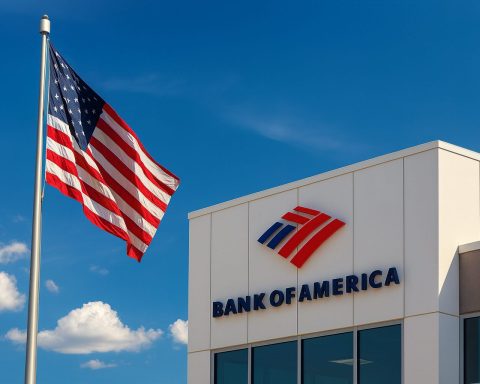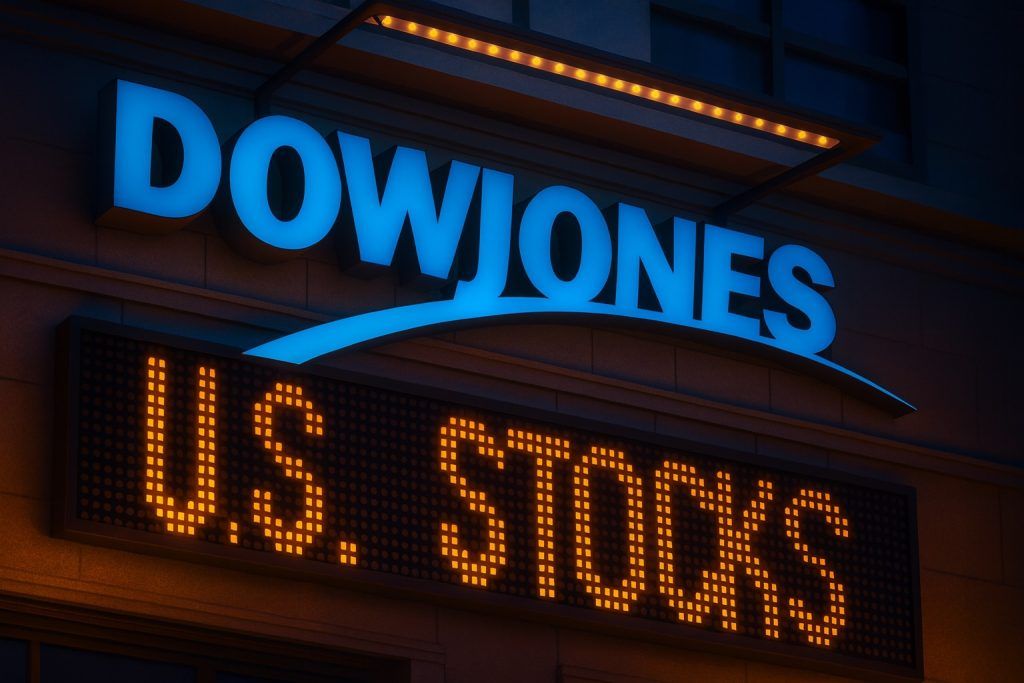The S&P 500 slid about 1.5% on Thursday after a nearly 2% morning surge, as AI high‑flyers, crypto and other speculative trades were hit by a violent reversal following a long‑delayed U.S. jobs report.
Whipsaw on Wall Street: Morning Euphoria, Afternoon Pain
The S&P 500 index closed at 6,539.09, down 103.07 points, or 1.52%, in one of the most dramatic intraday swings since the spring tariff turmoil. The Nasdaq Composite dropped 2.16% to 22,084.59, while the Dow Jones Industrial Average fell 0.83% to 45,757.25. [1]
Earlier in the session, optimism over Nvidia’s blockbuster earnings and a stronger‑than‑expected jobs report had pushed the S&P 500 up nearly 2%, with the Nasdaq up more than 2.5% and the Dow ahead by more than 700 points, according to live coverage from Bloomberg, the Wall Street Journal and MarketWatch. [2]
By the closing bell, that early “everything rally” had turned into an “everything reversal.” Market strategists noted that Thursday’s high‑to‑low swings rank among the largest of the year and echo April’s tariff‑driven volatility, underscoring how fragile sentiment has become around AI stocks, stretched valuations and shifting Federal Reserve expectations. [3]
The S&P 500 is now just over 5% below its all‑time closing high of 6,890.89 set on October 28, when the index logged its 36th record of 2025. [4]
S&P 500 Today: Final Numbers at the Close
- S&P 500: 6,539.09 (‑1.52%, about ‑103 points) [5]
- Dow Jones Industrial Average: 45,757.25 (‑0.83%) [6]
- Nasdaq Composite: 22,084.59 (‑2.16%) [7]
According to preliminary data compiled by Reuters, technology stocks were the biggest drag on the S&P 500, while consumer staples were the only sector to finish in positive territory, a classic defensive pattern on a risk‑off day. [8]
Nvidia and the AI Trade Flip From Hero to Villain
If Wednesday was the victory lap for AI, Thursday became the hangover.
- Nvidia initially jumped as much as 5% after its fiscal Q3 numbers easily beat expectations and management issued another upbeat revenue forecast, saying demand for its Blackwell AI chips is “off the charts,” according to company commentary carried by multiple outlets. [9]
- By the close, Nvidia had reversed into a loss of roughly 2–3%, dragging the broader chip complex with it. Reuters reported that the Philadelphia Semiconductor Index fell around 3%, erasing early gains. [10]
Analysts framed the move as a classic “good news, bad tape” moment: Nvidia’s earnings and guidance reaffirmed the strength of AI spending, but valuation anxiety and crowded positioning overwhelmed the fundamentals.
A Reuters analysis published earlier in the day warned that the AI boom is bringing fresh risks to U.S. markets, with companies borrowing heavily and paying rich premiums for AI‑related acquisitions. McKinsey estimates about $7 trillion in investment may be needed by 2030 to build out AI infrastructure, raising questions about leverage and return on capital. [11]
Bloomberg’s market wrap noted that Thursday’s sell‑off hit “assets favoured by retail momentum traders” the hardest, including AI leaders and cryptocurrencies, as Bitcoin slid below $87,000, its lowest level since April. [12]
Delayed Jobs Report Drops: Solid Hiring, Higher Unemployment
The other big catalyst came from Washington, not Silicon Valley.
The U.S. Bureau of Labor Statistics finally released the September employment report, which had been delayed nearly seven weeks by a 43‑day federal government shutdown. [13]
Key headlines from the report:
- Nonfarm payrolls: +119,000 in September, more than double the roughly 50,000 jobs economists expected. [14]
- Unemployment rate:4.4%, up from 4.3%, the highest jobless rate since late 2021. [15]
- Sector breakdown:
- Strong gains in health care (+43,000 jobs), restaurants and bars (+37,000) and broader leisure and hospitality (+47,000).
- Retailers added nearly 14,000 jobs.
- Transportation and warehousing lost more than 25,000 jobs, manufacturing shed about 6,000, and federal government employment declined by another 3,000. [16]
Because of the shutdown, October’s jobs report was cancelled and the next update will now come December 16, combining October and November data. [17]
Economists described the report as “solid but not booming”: job growth rebounded from an August decline, yet the rising jobless rate and downward revisions to prior months underscore a gradual cooling labour market, not a re‑acceleration. [18]
Fed Expectations and Bond Yields: More Confusion, Not Less
For the Federal Reserve, Thursday’s data did not deliver the clear signal markets had hoped for.
- Swap markets now price roughly a one‑in‑three chance of a rate cut in December, up from around one‑in‑four before the report, as traders weigh slower jobs growth against higher unemployment and ongoing inflation concerns. [19]
- The 10‑year Treasury yield drifted lower, hovering just above 4.10%, while 2‑year yields—more sensitive to Fed expectations—fell toward 3.56%, according to Reuters’ late‑day bond market wrap. [20]
In a separate speech, Fed officials flagged financial stability risks, noting that richly valued assets could be vulnerable to “outsized price declines” if economic or policy shocks hit at the wrong moment. [21]
Combine that with Thursday’s AI‑driven reversals, and it’s not hard to see why equity investors are feeling jittery rather than reassured.
Sector Snapshot: Staples Shine, Tech Stumbles
Under the hood of the S&P 500, the day was defined by a defensive rotation:
- Technology was the steepest decliner, weighed down by Nvidia and other chipmakers, as exchange‑traded funds tracking semiconductors came under pressure once Nvidia’s early gains faded. [22]
- Consumer staples finished as the only S&P 500 sector in the green, as investors moved into steadier earnings streams while shedding high‑beta growth names. [23]
One standout on the day was Walmart:
- Shares of the retail giant surged roughly 7%, leading both the Dow and the S&P 500, after the company beat quarterly profit and revenue expectations, raised its full‑year outlook, and announced plans to move its stock listing from the NYSE to the Nasdaq. [24]
The contrast was stark: while AI hardware and crypto were being aggressively sold, a big‑box retailer with strong cash flow and a growing e‑commerce business became a rare winner, reinforcing the defensive tone.
Volatility Spikes as Indexes Back Away From Record Highs
Wall Street’s “fear gauge,” the Cboe Volatility Index (VIX), jumped on Thursday as both the Dow and Nasdaq swung more than 1,000 points from their intraday highs to their lows, according to Reuters. [25]
Today’s drop extends a short but sharp pullback from the S&P 500’s late‑October peak:
- The index is now about 5% below its October 28 record close of 6,890.89. [26]
- The Nasdaq Composite sits roughly 7–8% below its own recent all‑time high above 23,950, according to MarketWatch and historical data. [27]
That puts the market in what many strategists call a “garden‑variety pullback”, but the speed and violence of intraday moves are re‑awakening concerns that AI‑linked stocks, crypto and other speculative trades have become too dominant in major indices. [28]
How Today’s S&P 500 Move Fits Into the Bigger Picture
A few themes stand out from Thursday’s session:
- AI is still the main story—on the way up and on the way down.
Nvidia’s results confirmed robust demand for AI hardware, but they did not settle the debate over whether the sector is in a bubble. The fact that an initially euphoric reaction turned into a broad tech sell‑off highlights just how sensitive valuations are to shifts in sentiment. [29] - The labour market is cooling, not collapsing.
The delayed jobs report shows modest but above‑trend hiring alongside a slow drift higher in unemployment, a combination that supports the case for gradual Fed easing but does not force policymakers’ hand. Investors are likely to scrutinise every data point between now and the Fed’s next meeting, especially with October’s jobs data missing. [30] - The Fed is watching asset prices as much as inflation.
With officials openly discussing financial stability and the risk of sharp market declines, volatile sessions like today’s may weigh as heavily on policy thinking as headline inflation figures. [31] - Defensive positioning is back in style.
The outperformance of consumer staples and blue‑chip retailers like Walmart suggests that many investors are rotating within equities rather than exiting the asset class altogether, favouring companies with steady earnings and pricing power over high‑beta growth stories. [32]
What Investors Are Watching Next
Looking ahead, traders and portfolio managers are likely to focus on:
- Federal Reserve communication over the coming days, including any remarks that clarify whether December is still “live” for another rate cut. [33]
- Additional AI‑related earnings and guidance, which will either reinforce or challenge the narrative that AI spending can justify premium valuations. [34]
- The December 16 jobs release, which will bundle October and November data and serve as the next major checkpoint for the labour market and Fed expectations. [35]
For now, November 20, 2025 will go down as another reminder that in a market dominated by AI optimism, good news can still lead to bad price action—and that the S&P 500’s path from here is likely to be as bumpy as today’s session.
This article is for informational purposes only and does not constitute financial advice or a recommendation to buy or sell any securities.
References
1. www.reuters.com, 2. www.bloomberg.com, 3. www.marketwatch.com, 4. www.morningstar.com, 5. www.reuters.com, 6. www.reuters.com, 7. www.reuters.com, 8. www.reuters.com, 9. m.economictimes.com, 10. www.reuters.com, 11. www.reuters.com, 12. www.bloomberg.com, 13. www.bls.gov, 14. www.reuters.com, 15. www.investopedia.com, 16. www.reuters.com, 17. njbia.org, 18. www.reuters.com, 19. m.economictimes.com, 20. www.reuters.com, 21. www.reuters.com, 22. www.reuters.com, 23. www.reuters.com, 24. www.investopedia.com, 25. www.reuters.com, 26. www.morningstar.com, 27. www.marketwatch.com, 28. www.reuters.com, 29. www.bloomberg.com, 30. www.bls.gov, 31. www.reuters.com, 32. www.reuters.com, 33. www.reuters.com, 34. www.reuters.com, 35. njbia.org







